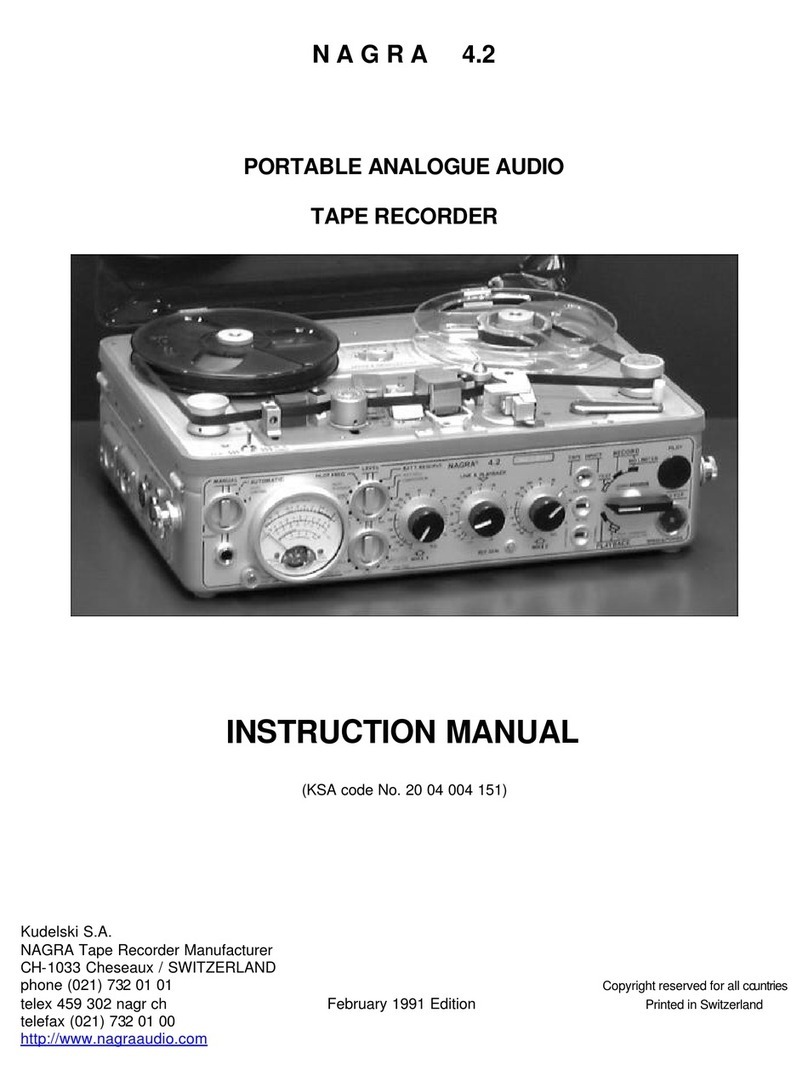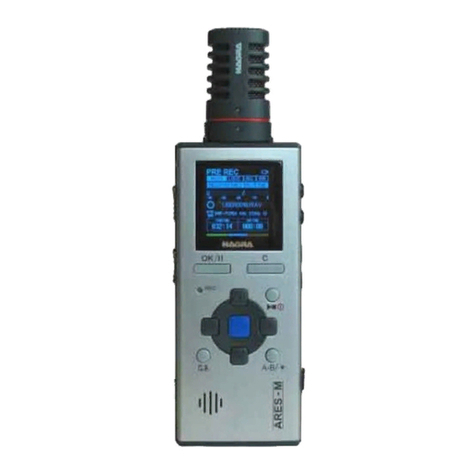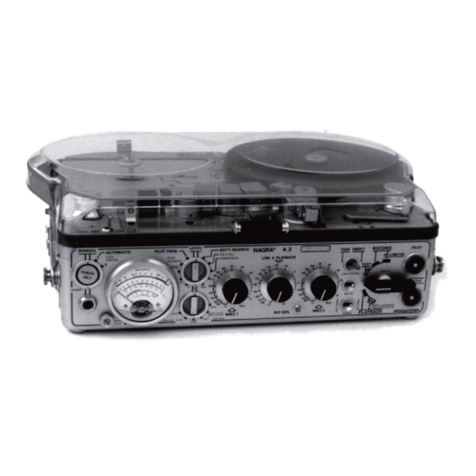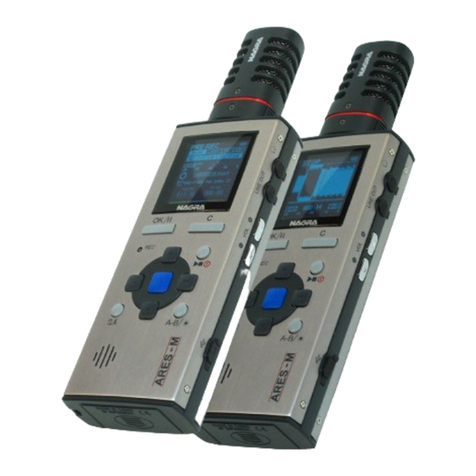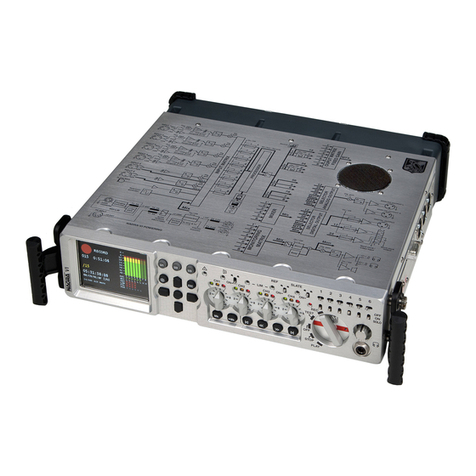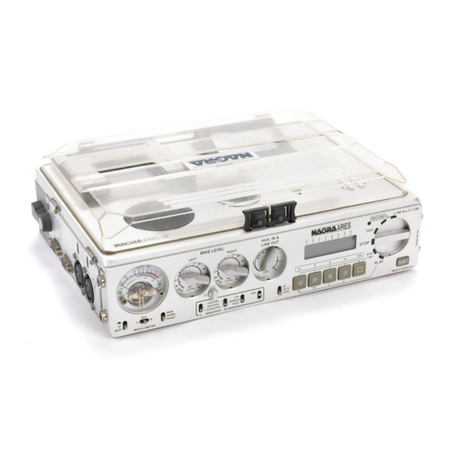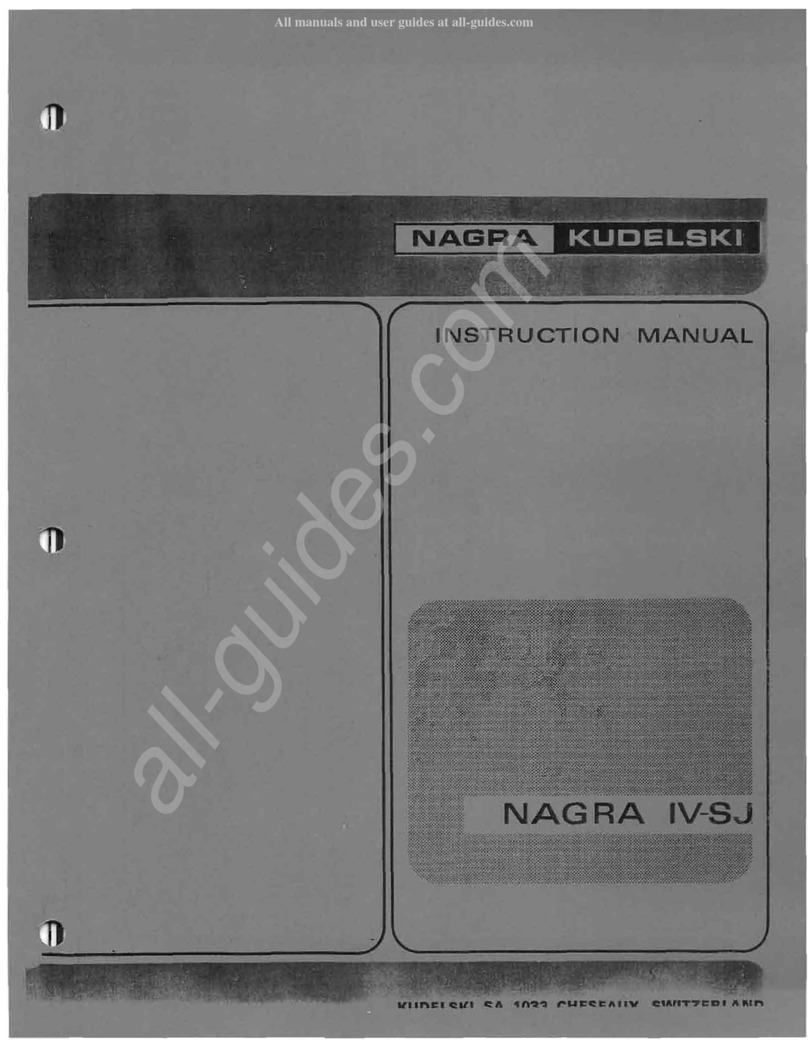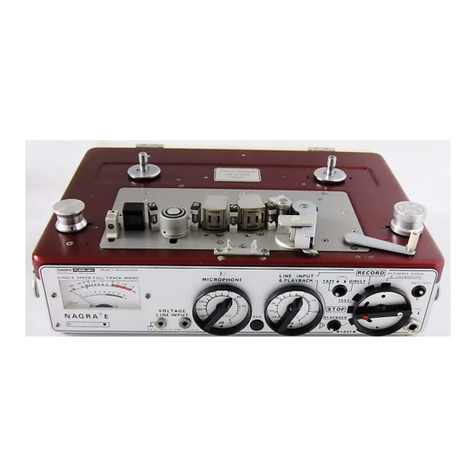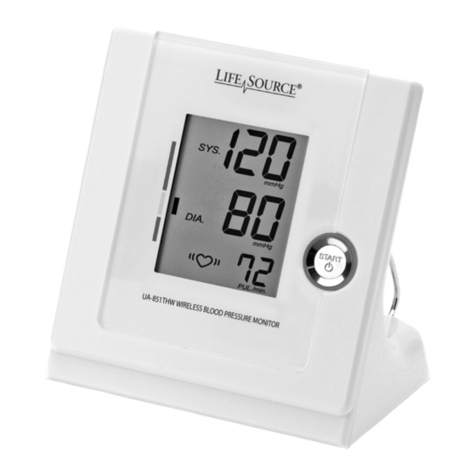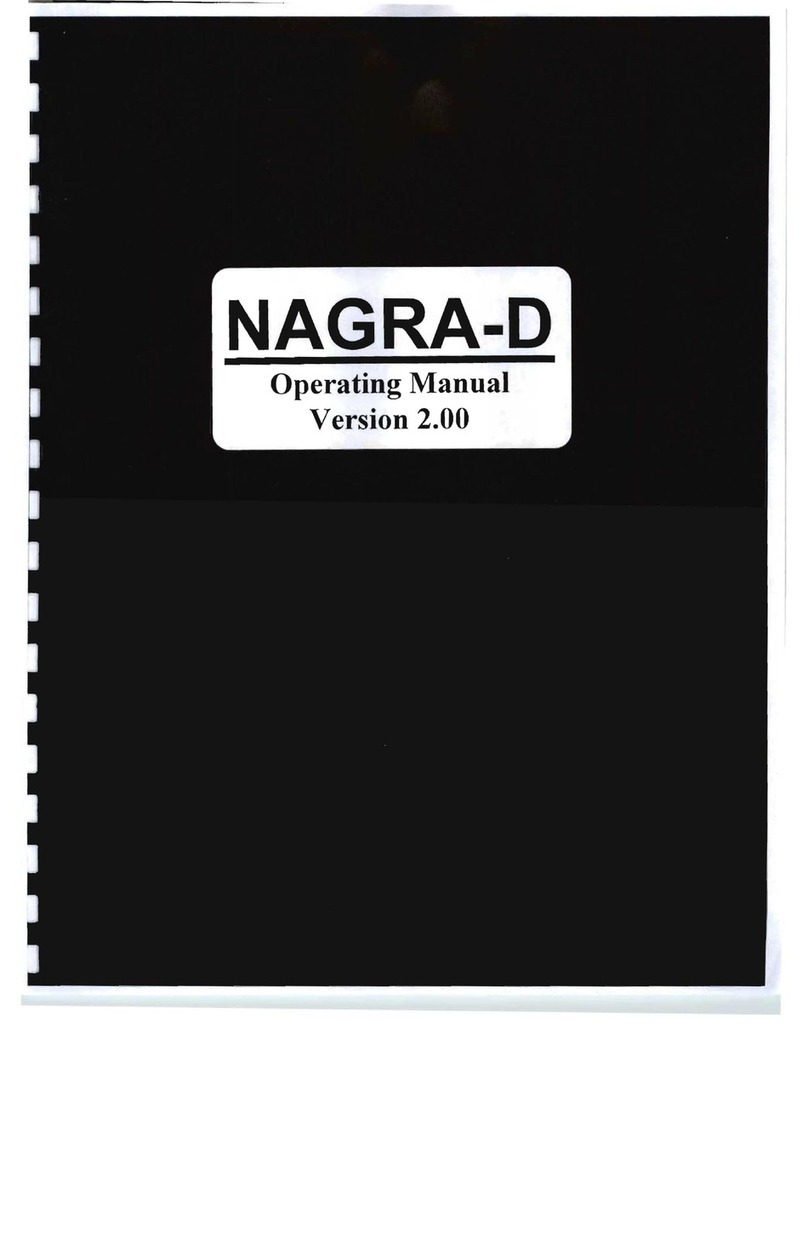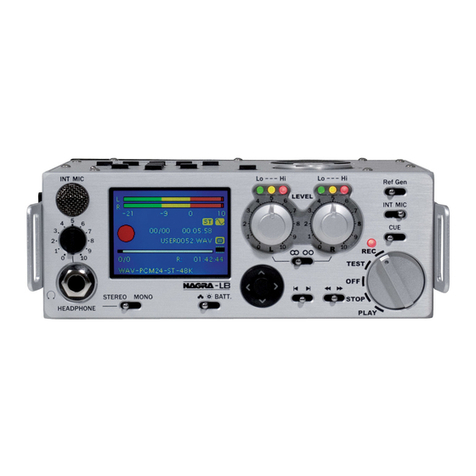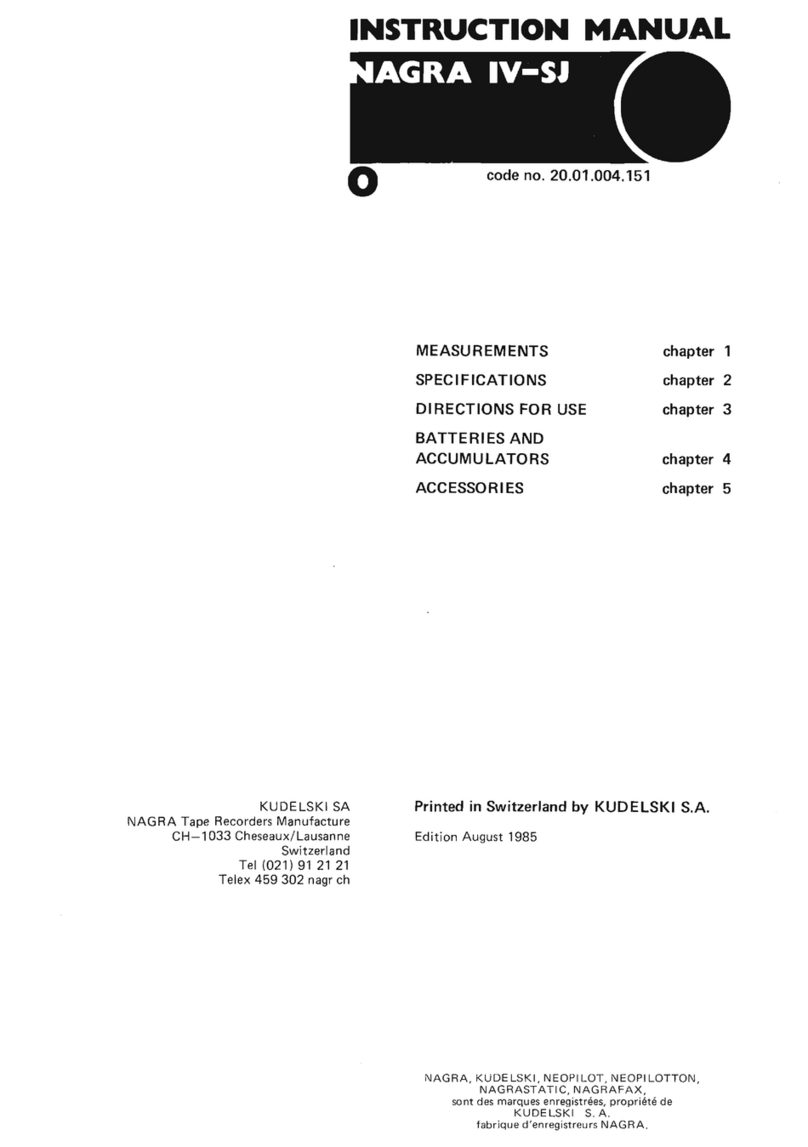
1.2 POWER SUPPLY
All models of the NAGRA IV- S may
be
powered by an external power supply (ATN
-3)
or
alternatively by internal batteries. The I
V-S
will accept voltages ranging from
-,
1 V to
-3
0 V with
peaks
of
up to
-3
5 V.
The batteries are placed in the bott
om
of the machine and the polarity is marked inside the
compartment which is opened by turning the two fasteners with a screwdriver or a small
co
in. All
the batteriesMUST be orientated in the same direction as indicated on the base of the battery
compartment.
The NAGRA
IV-S
houses twelve 1.5 V
ce
lls having a maximum diameter of 33.5 mm and a length
of
between
59
.5 and 62.5 mm. The cells manufactured under the following standards are generally
acceptable: CEI R-200. ASA
"D
" and
L9D
.
It is important to remember that corrosive material can leak out of flat batteries, causing severe
damage to the recorder, and therefore it is recommended not to leave batteries in the
ma
chine
during periods of storage.
The external supply is led into the machine via connector (48) on the right-hand side of the
machine. Rechargeable batteries may also
be
used and can be charged using the
ATN-3
C (order
no 14376) which includes the charger circuitry.
To
check the state of the batteries or the external supply, set modulometer switch (12) to the
MSA
TT
Mposition: in this case the red needle of the modulometer indicates the battery voltage on
the (volts Icell) scale and the green needle indicates the voltage needed by the motor.The
difference between these two readings shows the battery reserve.
When the power supplied to the machine is insufficient for normal operation of the recorder, the
rotary indicator "SPEED AND POWER" on the front panel of the machine will turn bla
ck
. The
IV-S
will function when the power is as low as 12 V (at 15 ips 138 cm/s) and down to as low as
10.5 V at the lower speeds. (These figures correspond to a machine in perfe
ct
condition and
working at room temperature).
NOTE
:Time Code machines will stop recording Time code when the batteriesbecome flat
before the audio recording is affected.
When using an external supply, selector switch (3) must
be
in the "EXT" position. It
mu
st be in the
"SA
TT
"position when internal batteries are in use. It is not necessary to r
em
ove the batteries
when working with an external supply (and vi
ce
versa).
NOTE: For information on power supply to the time code circuits of the
IV-S
TC
refer to page
IV6
.1
-1 .
EXTERNAL POWER SUPPLY
On the right-hand side of the machine there is a 6 pin Tuchel-type T 3403 connector marked
"POWER PACK". The
co
rresponding plug is the T 3400
/1
.
The connections are as follows:
pin 1 =Battery negative
pin 2 - Chassis (positive)
pin 3 =Pilot playba
ck
output
pin 4 =Speed correction signal input
pin 5 =Negative external supply
pin 6 =-1 a vstabilized output.
June 1988 I1.2-1
